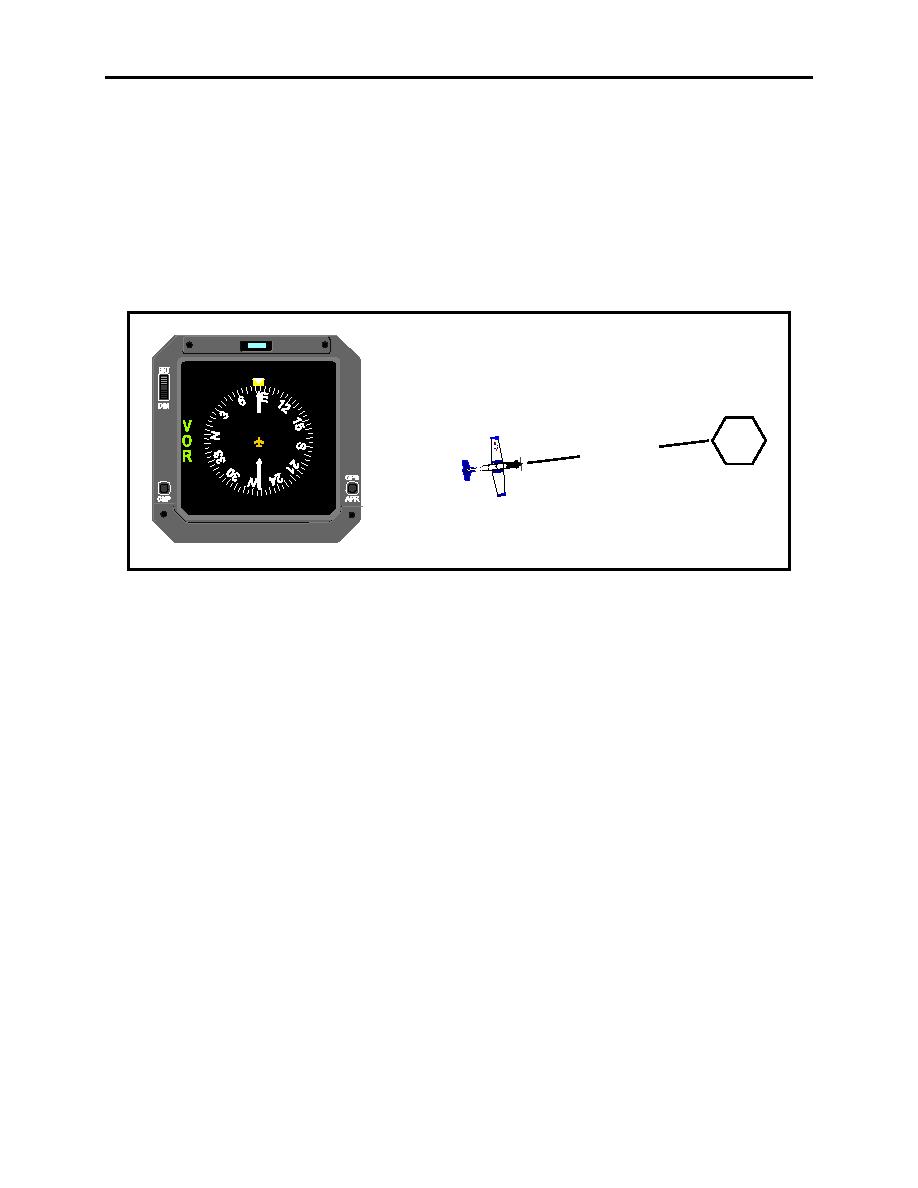 |
|||
|
|
|||
|
Page Title:
Figure 4-1 Radial Track Enroute |
|
||
| ||||||||||
|
|  CHAPTER FOUR
T-6A INSTRUMENT NAVIGATION
403. RADIAL TRACKING ENROUTE
Tracking is a procedure used to determine the proper heading needed to fly in order to maintain a
desired course. The difference between course and heading is called drift. When flying radio
instruments, the aircraft must maintain a straight path over the ground. Under a no-wind
condition, this may be accomplished simply by maintaining aircraft heading. If a crosswind
exists, the aircraft must crab into the wind to maintain a straight path over the ground, thus
preventing drift. The tracking procedure (crabbing into the wind) determines the corrected
aircraft heading that will keep the aircraft on the desired flight path over the ground (Figure 4-1).
360
360
AIRCRAFT HDG 083
ial
263 Rad
Figure 4-1 Radial Track Enroute
RADIAL TRACKING PROCEDURE (VOR)
1.
Tune the proper station.
2. Identify the station by turning up the volume and comparing it against the Morse Code
found on the enroute chart or approach plate.
NOTE
A TACAN station identification occurs approximately every 35
seconds and a VOR station identification is continuous. If you do
not know Morse Code, then ensure you verify the signal against a
chart depicting the signal (Enroute Low/High Altitude Charts or
Low/High Altitude Approach Charts).
3. Monitor the station identifier to ensure continuous signal integrity. Navigation information
is reliable only when:
a.
The warning indicator (red X) is not displayed.
b.
The NAVAID identifier is received.
c.
The aircraft is within the usable range of the equipment.
4-8
INSTRUMENT NAVIGATION
|
|
Privacy Statement - Press Release - Copyright Information. - Contact Us |